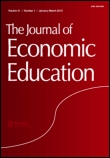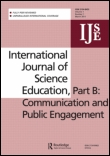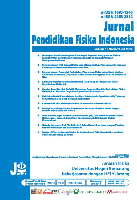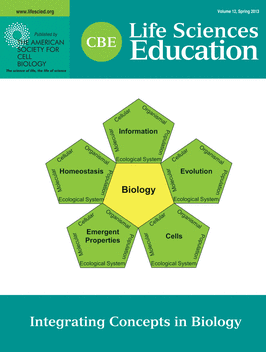
Resonance-Journal of Science Education
Scope & Guideline
Connecting Research and Pedagogy for Effective Learning
Introduction
Aims and Scopes
- Interdisciplinary Science Education:
The journal focuses on integrating various fields of science, including physics, chemistry, biology, and mathematics, to provide a holistic educational experience. - Innovative Teaching Methods:
It highlights novel teaching strategies and tools, such as computational methods, interactive simulations, and inquiry-based learning approaches to enhance student engagement. - Historical and Biographical Perspectives:
The journal often includes historical accounts and biographical sketches of notable scientists, providing context to scientific advancements and inspiring future generations. - Application of Science in Real-world Scenarios:
Articles frequently discuss the application of scientific principles in everyday life, emphasizing relevance and practical understanding of complex concepts. - Exploration of Emerging Scientific Themes:
The journal maintains a focus on trending scientific topics, ensuring that readers are informed of the latest developments and innovations in various scientific domains.
Trending and Emerging
- Computational and Digital Tools in Education:
There is an increasing emphasis on the use of computational tools and digital resources, such as coding and simulations, to enhance learning experiences and engage students in scientific inquiry. - Interdisciplinary Research and Collaboration:
The journal is promoting collaborative research efforts that combine insights from multiple scientific disciplines, encouraging a more integrated understanding of complex scientific issues. - Sustainable Science Education Practices:
Emerging themes around sustainability and environmental science are becoming more prevalent, reflecting a growing awareness of global challenges and the role of science education in addressing them. - Focus on Student-Centric Learning:
An increasing number of articles are focusing on student-centered learning methodologies, such as project-based learning and inquiry-based approaches, which prioritize student engagement and active participation. - Integration of Modern Scientific Discoveries:
The journal is increasingly featuring discussions on modern scientific discoveries, including advancements in fields like biotechnology, nanotechnology, and quantum physics, and their implications for education.
Declining or Waning
- Traditional Lecture-based Teaching:
There has been a noticeable decrease in articles promoting traditional lecture-based teaching methods, reflecting a broader trend towards more interactive and student-centered learning approaches. - Basic Theoretical Papers:
Papers that focus solely on theoretical frameworks without practical applications are becoming less common, as the journal increasingly prioritizes research that demonstrates real-world relevance. - Narrowly Defined Scientific Disciplines:
The journal appears to be moving away from articles that focus exclusively on narrow scientific disciplines, favoring interdisciplinary approaches that integrate multiple fields of study. - Historical Analysis without Contemporary Relevance:
While historical perspectives are still valued, there is a waning interest in analyses that do not connect past scientific developments to current educational practices or scientific understanding. - Overly Specialized Content:
There is a reduction in highly specialized content that targets only a niche audience, indicating a shift towards more accessible articles that appeal to a broader readership.
Similar Journals

JOURNAL OF ECONOMIC EDUCATION
Fostering a Deeper Understanding of Economic PrinciplesJOURNAL OF ECONOMIC EDUCATION, published by Routledge Journals, Taylor & Francis Ltd, serves as a pivotal platform for the dissemination of research in the vital intersection of economics and education. With an ISSN of 0022-0485 and an E-ISSN of 2152-4068, this esteemed journal has been contributing to the field since 1969 and continues to evolve with influential insights projected through to 2024. Ranking in the Q2 category for both Economics and Econometrics, and Education as of 2023, it demonstrates a significant commitment to enhancing educational practices in economics. Researchers and educators alike will find value in its empirical studies, theoretical explorations, and innovative pedagogical approaches. Although currently not offering open access, the journal maintains a competitive reputation with a Scopus rank placing it in the 54th and 47th percentiles across its related fields. Join the scholarly dialogue that shapes the future of economic education and informs teaching methodologies across the globe.

Revista Educacion en Ingenieria
Connecting Minds: Bridging Theory and Practice in Engineering EducationRevista Educación en Ingeniería is a distinguished academic journal dedicated to advancing research and discourse in the field of engineering education. Published by the Asociación Colombiana de Facultades de Ingeniería, this journal seeks to foster innovative teaching practices and facilitate the exchange of ideas among educators, researchers, and students within the engineering domain. With an ISSN of 1900-8260, it provides a platform for scholarly articles that explore pedagogical methodologies, curriculum development, and technological integration in engineering programs. Although the journal operates under a traditional access model, its commitment to high-quality research is reflected in its broad scope, which invites contributions from a diverse range of educational perspectives. The Revista Educación en Ingeniería plays a critical role in shaping the future of engineering education, ensuring that researchers and practitioners can stay informed about the latest developments and best practices in the field.

International Journal of Science Education Part B-Communication and Public Engagement
Fostering dialogue to enhance public understanding of science.The International Journal of Science Education Part B: Communication and Public Engagement, published by Routledge Journals, Taylor & Francis Ltd, is a leading peer-reviewed journal dedicated to advancing research in the evolving fields of science communication and public engagement in education. With an ISSN of 2154-8455 and E-ISSN of 2154-8463, the journal has established itself as a key resource for researchers, educators, and practitioners interested in innovative communication strategies and engagement practices that enhance public understanding of science. It holds a commendable Q2 ranking in both the Communication and Education categories for 2023, reflecting its significant impact within academia—ranked 139th in Social Sciences Communication and 515th in Social Sciences Education based on Scopus metrics. Over its publication years from 2011 to 2024, the journal has provided a platform for scholars to share their insights and empirical findings, fostering dialogue and collaboration among professionals. Although it does not offer open access, it remains a vital source of knowledge, keeping stakeholders informed about the latest developments in science education and public outreach.

Journal of Baltic Science Education
Exploring New Frontiers in Science Teaching MethodologiesThe Journal of Baltic Science Education, with ISSN 1648-3898, is a leading academic journal published by the SCI METHODICAL CENTRE - SCI EDUCOLOGICA in Lithuania. This esteemed journal, established in 2008, has gained recognition within the educational sector, boasting a notable impact factor that places it in the Q2 category for the year 2023, highlighting its significance in advancing educational research. With Scopus rankings reflecting a commendable placement at #659 out of 1543 in the Education category, the journal serves as a vital platform for disseminating knowledge and fostering discourse among researchers, professionals, and students in the field of science education across the Baltic region and beyond. The journal’s objectives include promoting innovative educational practices, sharing empirical research findings, and contributing to the development of effective science teaching methodologies, ensuring that it remains at the forefront of academic inquiry in education.

Journal of Microbiology & Biology Education
Elevating Educational Practices in Microbiology and BiologyJournal of Microbiology & Biology Education, published by the American Society for Microbiology, serves as a vital platform for advancing knowledge and education in microbiology and related biological fields. With an ISSN of 1935-7877 and an E-ISSN of 1935-7885, this open-access journal has been fostering scholarly communication since 2000, ensuring that vital research is accessible to a global audience. The journal covers a broad scope within the disciplines of Agricultural and Biological Sciences, Biochemistry, Genetics, Molecular Biology, and Educational methodologies, holding a significant position as reflected by its Q2 quartile rankings in multiple fields for 2023. The Scopus ranking highlights its relevance, ranking it in the 64th percentile in general Agricultural and Biological Sciences and Education, and 48th in Immunology and Microbiology. Positioned in the United States, the journal addresses the imperative need for educational resources and research dissemination in the ever-evolving landscape of microbiological sciences. Researchers, professionals, and students will find invaluable insights and pedagogical innovations within its pages, advancing both academic inquiry and educational practice.

Jurnal Pendidikan Fisika Indonesia-Indonesian Journal of Physics Education
Connecting Researchers and Educators for Impactful LearningJurnal Pendidikan Fisika Indonesia-Indonesian Journal of Physics Education is a premier open-access journal dedicated to advancing research and pedagogy in the field of physics education. Published by Universitas Negeri Semarang, this journal aims to provide a platform for educators, researchers, and professionals to disseminate innovative teaching practices, empirical studies, and theoretical insights that contribute to the enhancement of physics education globally. With a commitment to accessibility since its inception in 2009, the journal is instrumental in fostering collaboration and knowledge sharing across the international physics education community. The journal not only serves as a vital resource for scholars and practitioners but also plays a significant role in shaping the future of physics teaching and learning in Indonesia and beyond. Researchers and educators are encouraged to submit their manuscripts to engage with the latest trends and research in this dynamic field.

Research and Practice in Technology Enhanced Learning
Innovating learning environments with technology-driven solutions.Research and Practice in Technology Enhanced Learning is a leading international journal dedicated to advancing the field of educational technology and its applications in various learning environments. Published in Taiwan, this journal has firmly established itself as an open-access platform for sharing innovative research, practical insights, and emerging trends since its inception in 2015. With an impressive Q1 ranking in Education and Media Technology for 2023, coupled with notable placements in the fields of Social Psychology and Management of Technology and Innovation, the journal underscores its significance in fostering interdisciplinary collaboration among scholars and practitioners. Its rigorous peer-review process ensures the publication of high-quality articles that contribute substantively to both theoretical and practical knowledge. The journal's commitment to open access enhances its visibility and accessibility, making it an invaluable resource for researchers, educators, and students seeking to explore the intersection of technology and learning.

CBE-Life Sciences Education
Unlocking the Potential of Life Sciences Education through Rigorous Research.CBE-Life Sciences Education, published by the American Society for Cell Biology, is a premier academic journal that bridges the fields of education and life sciences. With a robust impact factor reflected in its prestigious Q1 ranking in both Biochemistry, Genetics and Molecular Biology and Education categories in 2023, this journal is pivotal for researchers and educators alike. Its mission is to enhance learning and pedagogy across the biological sciences, fostering innovative educational practices that elevate the teaching and understanding of complex biological concepts. With a convergence of rigorous research and practical insights, CBE-Life Sciences Education serves as an essential resource for professionals and students committed to advancing life sciences education. The journal is available through traditional subscription, ensuring access to a wide array of valuable articles from 2006 to the present and beyond.

International Journal for Technology in Mathematics Education
Enhancing teaching methodologies for a digital age.International Journal for Technology in Mathematics Education (ISSN: 1744-2710, E-ISSN: 2045-2519) is a pioneering platform published by Research Information Ltd that focuses on the interplay between technology and mathematics education. Established to bridge the gap between pedagogical practices and technological advancements, this journal connects researchers, educators, and practitioners in a bid to enhance teaching methodologies and optimize learning outcomes in mathematics. Although its coverage in Scopus was discontinued after 2020, it continues to be a vital resource for those interested in the integration of technology into educational settings. With its significant emphasis on interdisciplinary approaches, the journal has garnered attention in the realms of social sciences and computer science, with Scopus rankings reflecting its niche contributions. This journal is crucial for professionals aiming to explore innovative techniques in mathematics education, making it an invaluable addition to any academic library.

Teaching of Mathematics
Innovating the Future of Mathematics Education TogetherTeaching of Mathematics is an esteemed open-access journal devoted to the field of mathematics education, published by DRUSTVO MATEMATICARA SRBIJE in Serbia. Since its inception in 1998, the journal aims to foster scholarly dialogue and disseminate research findings that contribute to the effective teaching and learning of mathematics. Although it currently holds a Q4 ranking in both Education and Miscellaneous Mathematics categories, the journal is dedicated to providing a platform for innovative pedagogical strategies, theoretical discussions, and empirical studies. With an ISSN of 1451-4966 and an E-ISSN of 2406-1077, Teaching of Mathematics offers open access to its content, ensuring that researchers, educators, and students can freely benefit from its contributions. As it converges towards 2024, the journal aspires to enhance its impact and influence within the mathematical education community, encouraging all stakeholders to share their insights and advancements in this critical area of study.